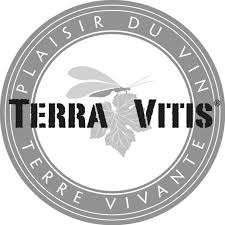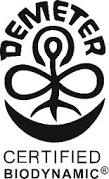What is organic?
When we use the word “organic” to refer to agricultural products, we mean grown without the use of pesticides, herbicides, or other chemicals. Only “natural” methods of pest and disease control are used, such as herbal treatments, and straight-from-the-cow (or chicken) fertilzers are utilized.
What is organic wine?
Organic wine means wine made using organic methods in the vineyards and in the the winery. Many winemakers who follow these practices also believe in minimal intervention in the winery, “letting the grapes speak for themselves,” often referred to as “natural wine.” This means they add no SO² to stop the fermentation process or protect the wine from possible spoilage. Some use only the indigenous yeasts found on the grapes for fermentation, others will augment with additional purchased yeasts of the same type, when needed.
There are many different levels of practice, and several different certifications found around the world. In France, one could say it starts with agriculture/viticulture raisonnée, which means “reasonable.” The idea is to respect the earth and use the fewest and least harmful products possible. This has also been translated as “sustainable agriculture,” a phrase commonly used in the US. These wines are made with care, but will not be certified organic.
Started in 1990, there is a winegrower-specific certification in France called Terra Vitis, which requires annual audits in the vineyards and winery to ensure that their rules and regulations are being followed. These rules extend even to the recycling of all products, from the grape must to the water used for rinsing the wine press. Their motto reads, “The pleasure of wine, (from) living soil.”
The next level of strict control is for vins bio (short for biologique), organic wines made with no chemical products used at all. Of course, all products used for cleaning inside the winery cannot be harmful to humans. Products such as iodine and chlorine are strictly prohibited.
There are also those who use organic methods, but have chosen not to get certified. Why not? Certification is an expensive, time-consuming process (normally 3 years or more), without guarantee of return on investment. Although there is a trend toward organic and natural wines, it is still a very small part of the global wine market. For many consumers, it is sufficient that the winemaker is using organic methods; they don’t demand certification. In addition, certain winegrowing regions such as Champagne have a very difficult time following strictly organic practices, as they have limited recourse when faced with mildew, vineyard pests, and other problems. This is why out of nearly 35,000 hectares (86,000 acres) of vineyards in Champagne, just over 1% are certified organic.
What are common organic practices in the vineyards?
Vineyard managers around the world have been utilizing all sorts of natural methods, since the beginning of wine. Helpful insects such as ladybugs are released into the vineyards to eat the crop-destroying aphids and other pests. Birdhouses attract bluebirds and swallows to eat more bugs. Free-roaming chickens feast and fertilize as they go, but sometimes they go after the low-hanging grapes!
Those who farm organically may use techniques of sexual confusion to prevent harmful insects from breeding. By spraying the bugs’ sex hormones into the air around the vineyards, the males have a difficult time finding the females, who may reject them as breeding partners, thinking they are also female. This eliminates the need for harmful insecticides.
Winegrowers also use cover crops between the rows of vines, to attract beneficial insects that feed on other, harmful bugs, as well as to enrich the soil. The rose bushes you see at the end of many rows of vines form an early warning system. In theory, pests and disease will show up on the roses first, giving the winegrower an alert to take preventative measures before the scourge hits the precious grapes. However, I’ve heard from some viticulturists that the “early warning” may be a matter of hours, not days, and unless they are truly vigilant, it is often too late to take preventative measures, making the rose bushes more of a traditional adornment to the vineyard.
On French wine bottles, you will see the logos for AB (agriculture biologique), Terra Vitis, and Demeter.
You can find the phrases “organically-grown grapes”, “organic wine” or “LIVE” on American wine labels. (LIVE: Low Input Viticulture & Enology, a nonprofit organization that certifies US vineyards using international standards of sustainable viticulture practices in wine-grape production.)

For more info about organic standards and labeling, visit:
www.ecolabelindex.com/ecolabel/ab-agriculture-biologique
www.terravitis.com/en/our-philosophie/the-terra-vitis-signature/
www.ams.usda.gov/nop/Consumers/Consumerhome.html
www.ams.usda.gov/nop/NOP/standards/ListReg.html
What does “biodynamic” mean?
Biodynamic farming uses methods devised to follow the philosophy of Rudolf Steiner. This goes beyond simple respect for the earth, and requires its adherents to follow a lunar calendar in each phase of the planting, maintenance, and harvest. Several kinds of preparations are made using natural products and herbs. In the photo below, a tisane was made by steeping herbs in water, then it was stirred for over an hour to activate the inherent healing and protective properties in the herbs. In the case of the two horn preparations listed below, cow horns are filled with manure or silica and planted in the vineyards at certain times of the year. They are later dug up and their contents are sprayed in the vineyards.
Biodynamic preparations
Horn Manure: Stimulates root growth and humus formation. Usually sprayed at the beginning of fall.
Horn Silica: Stimulates and regulates leaf growth. Sprayed in growing season just before or at bloom.
Chamomile: Stabilizes nitrogen within the compost and increases soil life.
Nettle: Stimulates soil health, providing plants with the individual nutritional components needed. Enlivens the earth (soil).
Oak Bark: Provides healing forces in order to combat disease.
Dandelion: Stimulates relation between silica and potassium so that silica can attract cosmic forces to the soil.
Valerian: Stimulates compost so that phosphorus components can be fully used by the soil.
Horsetail: Prevention or control of disease.
For additional information on biodynamics and Demeter certification, go to:
www.demeter.net/what-is-demeter
In a future post, I’ll talk about “vegan wine,” sulfites and allergies. Anything specific you want me to cover? Just let me know in the comments below.
*Photos courtesy of Champagne Vincent Couche.






